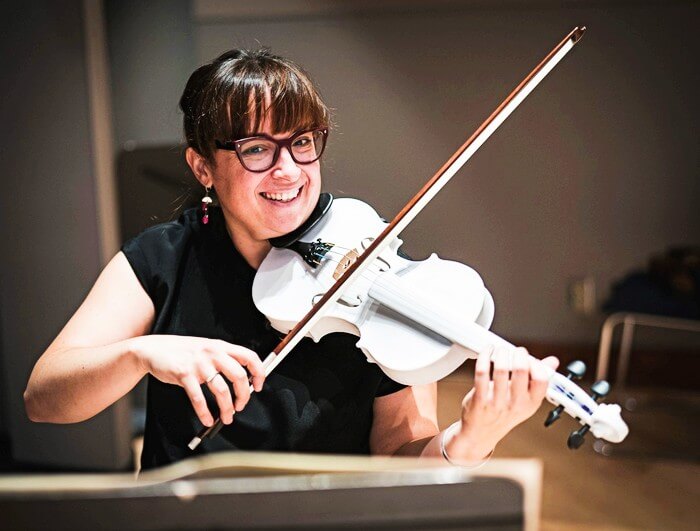There’s nothing quite like the sound of a Stradivarius violin. Building such a quality string instrument takes time, perfect materials, and a lot of skill, and the best ones can cost millions of dollars. Even mediocre violins can cost thousands, which puts them out of reach for most beginners and music classrooms.
One group is looking to rectify this by 3D-printing low-cost, durable violins for music students. In the process, they explored the factors that result in the best violin sounds and performed a concerto composed specifically for 3D-printed instruments.
Mary-Elizabeth Brown, director of the AVIVA Young Artists Program, will discuss the steps taken and the lessons learned in her presentation, “Old meets new: 3D printing and the art of violin-making.” The presentation will take place Dec. 6 at 10:35 a.m. Eastern U.S. in the Golden Eagle B room, as part of the 183rd Meeting of the Acoustical Society of America running Dec. 5-9 at the Grand Hyatt Nashville Hotel.
“The team’s inspiration roots in multiple places,” said Brown. “Our goals were to explore the new sound world created by using new materials, to leverage the new technology being used in other disciplines, and to make music education sustainable and accessible through the printing of more durable instruments.”
The 3D-printed violin was created in two sections. The violin’s body is made of a plastic polymer material, in the same manner as a traditional acoustic violin, and designed to produce a resonant tone, while the neck and fingerboard are printed in smooth ABS plastic to be comfortable in the musician’s hands. The result is a violin that produces a darker, more mellow sound than traditionally made instruments.
“The next step is to explore design modifications as well as efforts to lower the costs of production while making such instruments more widely available, especially in the realm of education,” said Brown.


